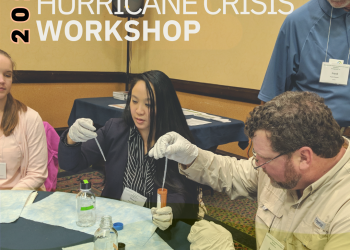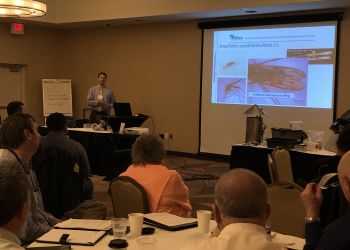By Tina Yuen and Patrick Glass, ChangeLab Solutions
Complete streets is the concept of designing streets so that all people—no matter if they’re walking, bicycling, using public transportation, driving, or mobility impaired—can safely and easily get where they’re going. Complete streets improve health, safety, and economic opportunities for communities.
Neighborhood Differences
 Picture your neighborhood, including all the people, pets, trees, houses, schools, churches, parks, businesses, and streets. What parts of the neighborhood make people healthier? What parts negatively affect people’s health?
Picture your neighborhood, including all the people, pets, trees, houses, schools, churches, parks, businesses, and streets. What parts of the neighborhood make people healthier? What parts negatively affect people’s health?
Not everyone has the same opportunities to be healthy. Because of discriminatory law and policy decisions made in the past, residents of low-income neighborhoods and communities of color often face greater barriers to health than those who live in wealthier, whiter areas. The conditions underlying health inequities exist in many different forms. These might include greater exposure to harmful pollutants, reduced access to fresh food and low-sugar beverages, disparities in economic opportunity and political influence, and an unsafe built environment that discourages active forms of travel and physical activity.
Low-income communities and communities of color consistently have lower access to safe streets because of long-standing disinvestment that has resulted in disparities in neighborhood conditions. As a result, these neighborhoods are often the least safe for people walking and bicycling.
One overlooked factor in community health is street design. Think back to your neighborhood. Are the streets clean, maintained, and safe for pedestrians, bicyclists, and people who use mobility assistance devices, like wheelchairs? Are there painted crosswalks and comfortable bus stops? What about the sidewalks? Are they well-lit and free of obstructions and hazardous cracks?
If the answer to these questions is yes, then there’s a good chance your neighborhood already has complete streets! But not every neighborhood is so lucky.
Completing the Streets, Ensuring Equity
In many communities across America, street design and transportation infrastructure are not conducive to positive health outcomes.
In Baltimore, for example, nearly one-third of city residents lack access to a car—a statistic that rockets to 80% in “historically disenfranchised” parts of the city that still suffer from the residual consequences of redlining and other discriminatory policies. The region’s public transportation system is disconnected from many centers of employment. And city residents endure higher rates of asthma, diabetes, obesity, and pedestrian fatalities than those who live in suburban or rural parts of the state.
In response to these pervasive and harmful injustices, community advocates and city leaders worked together to pass a complete streets ordinance in the city in 2018. While over 1,400 governments across the country have ratified complete streets policies in recent years, perhaps the most unique aspect of Baltimore’s ordinance is its commitment to “ensure equity by actively pursuing the elimination of health, economic, and access disparities.” Local leaders reached out to ChangeLab Solutions, a public health law & policy non-profit, for help ensuring the racial and economic “equity lens” in draft versions were included in the final ordinance.
Baltimore’s complete streets ordinance is a shining example for other cities, counties, and states that want to improve health and opportunity for all residents.
Tools for Public Health Professionals
Complete streets resolutions and ordinances like the one adopted in Baltimore are a powerful tool for transforming health in underserved communities. But many community advocates and policymakers don’t know where to begin when trying to implement complete streets. That’s why non-profit organizations like ChangeLab Solutions have created easy-to-use guides and model policies to help facilitate healthy, equitable changes at the local and state level.
Adapting an equitable complete streets policy that incorporates feedback from community members isn’t an easy process. City councilmembers’ policy priorities may differ radically from the needs of business owners or residents. Without thorough outreach efforts to minority groups that are often excluded from the policymaking process—like communities of color, folks with disabilities, older adults, low-income folks, and people without cars—community changes might only reflect certain privileged priorities and viewpoints.
Local public health professionals play a crucial role in enacting equitable complete streets policies. Because of their unique perspective and placement within the community, public health leaders are positioned to see connections between policy, the built environment, economic opportunity, and health. From organizing community workshops and advocacy coalitions to conducting health impact assessments and data analysis, public health professionals can serve as a nexus between important but disconnected stakeholders.
Learn more about how complete streets can improve health and equity in your community with A Guide to Building Healthy Streets: How Public Health Can Help Implement Complete Streets.
About the Authors:
Tina Yuen, MPH, MCP, is a senior planner at ChangeLab Solutions. She works on active transportation and supports cross-sector collaboration and systems change aimed at fostering healthy, sustainable, and just communities.
Patrick Glass is a digital content writer at ChangeLab Solutions. He works on showcasing the organization’s impact around the country through storytelling.
The mission of ChangeLab Solutions is to create healthier communities for all through equitable laws and policies. Check out our online catalog, connect with us on Twitter or Facebook, and join our email list.






